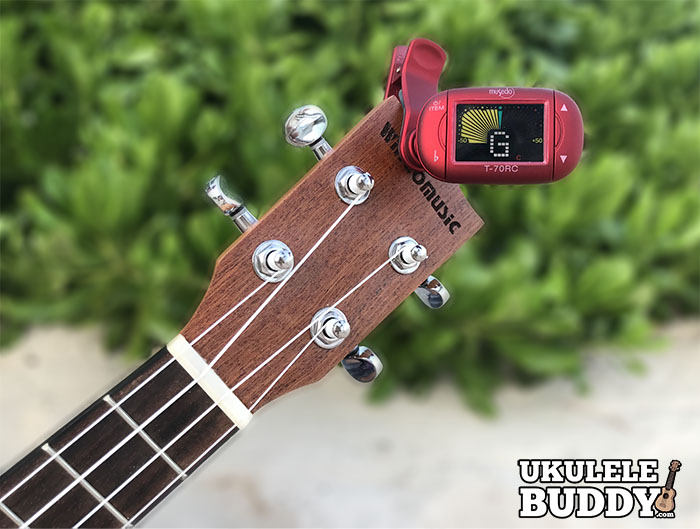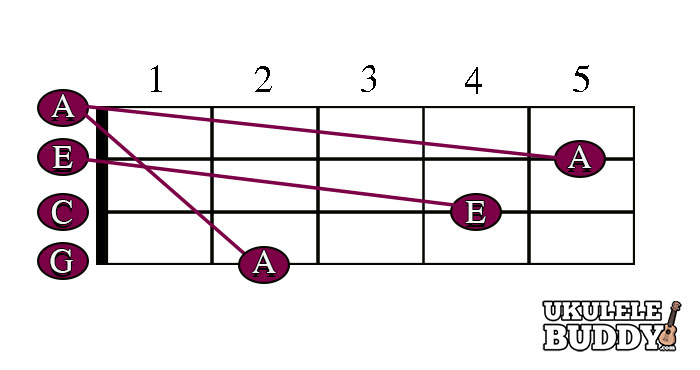How To Tune Your Ukulele
Before you start playing your ukulele, it’s always best to make sure it’s in tune. On this page we’ll talk you through the different ways you can tune a ukulele. You’ll learn about using electronic tuners, relative tuning, tuning with a piano, and with a guitar. Of course, the way you choose to tune your ukulele depends on what you have available at the time, but it’s good to know how each approach works. So, let’s get started.
What Is Standard Ukulele Tuning?
The open strings on a ukulele are most commonly tuned to the notes G, C, E, and A. This is known as standard tuning. To create a more rounded even sound, some people prefer to string their ukulele with a low G string rather than a high G. It is simply a matter of preference.
Electronic Ukulele Tuning With A Chromatic Tuner
Electronic tuners are a very simple way to tune your ukulele. Some tuners are instrument specific and may only tune certain notes. A chromatic tuner would be the best option, because it will detect every single note. This allows you to check the intonation of your ukulele as well as adjust to non-standard tunings. To use a chromatic tuner, is very straightforward. Play a string on your ukulele, and the device will tell you if it's in tune or not. Adjust your tuning knobs according to the readings until it's in perfect tune. NOTE: Set your tuner to 440hz, no flat symbols, if it has these functions.

Phone Ukulele Tuner Apps
Fun Fact: There are apps that do this exact same thing! You can go download it on your smartphone right now, and start tuning! This is very convenient for on-the-go tuning, and it can be a much cheaper alternative. Some tuning apps that we recommend are: Pitched Tuner, gStrings Tuner.
Relative Tuning A Ukulele
Relative tuning is a method you can use when you’re really stuck and have nothing available to help tune your ukulele. It involves tuning the strings relative to one another, so it is a bit tricky and not always 100% accurate, but it’s okay if you’re playing alone or as a last resort. With relative tuning it is ideal to begin with one string that you feel is somewhat close to being in tune. By assuming that this one string is in tune, we adjust the others. We have broken the method down into steps below:
- 1. Begin by playing the E string with your finger on the 5th fret, which should be an A note, and tune the E string with the tuning pegs until it sounds the same as the A string.
- 2. Now put your finger on the 4th fret of the C string, and this note should be an E. Play the C string and tune it until it sounds the same as the E string.
- 3. Finally, place your finger on the 2nd fret of the G string. This note should be a A. Play the G string and tune it until it sounds the same as the A string.
This method is quite fiddly and can take some getting used to. It’s worth noting that there are alternative ways to go about relative tuning; this is just one of them.

Tuning A Ukulele With A Piano
If you have a tuned piano (or a keyboard) available, then this is a great way to tune your ukulele because pianos can be used as a reference. This method involves playing notes on the piano and tuning the respective string on your ukulele until it sounds the same as the piano note. The diagram below illustrates which piano keys correspond to the G, C, E, and A notes. C is the same as middle C on the piano.

Tuning A Ukulele With A Guitar
In a similar way to tuning with a piano, you can use a tuned guitar to tune your ukulele. This method is ideal if you’re playing along with a guitarist. The G, C, E, and A ukulele strings correspond to the following notes on the guitar:
|


